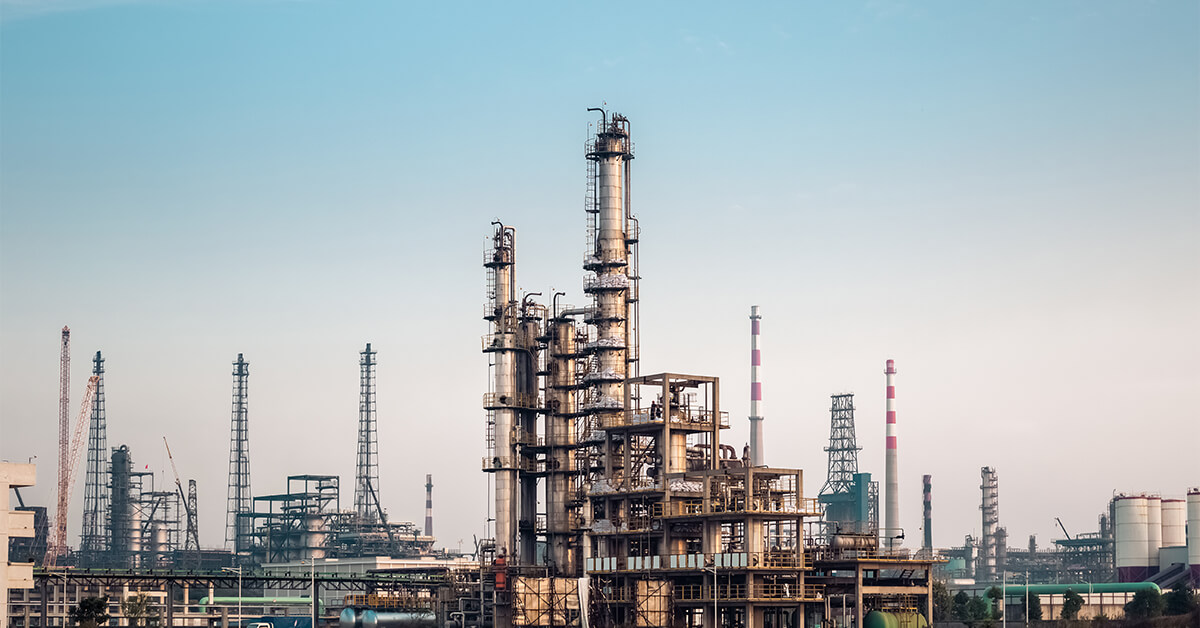
6-Part Blog Series: The Role of High-Performance Coatings in Shrinking the Carbon Footprint
In part two of this blog post series, we explored how the prevention of steel corrosion can reduce environmental impact by improving the overall carbon footprint. In this next blog post, we will discuss how to evaluate the volatile organic compounds (VOCs) produced by high-performance industrial coatings, as well as which data points to use when choosing a coating system with lower VOC emissions.
When I talk with asset owners about changing their coating specifications to lower VOC emissions, the topic of waterborne coatings inevitably pops up. The lines from a classic poem, "The Rime of the Ancient Mariner," come to mind: "Water, water, everywhere… and all the boards did shrink. Water, water, everywhere… nor any drop to drink." Will waterborne coatings be the answer for achieving zero, or near zero, VOC emissions in industrial coating applications? Or will they remain tantalizingly close, but just out of reach—like the sea of water surrounding the ancient mariner who was dying of thirst?
My personal experience is that waterborne coatings apply and cure well, as long as the environmental conditions during application fall in what I call the “Goldilocks Zone”—just right. Temperature and humidity changes affect the drying and curing times of all coatings—but have a greater impact on waterborne coatings as compared to those that are solvent borne.
Because there is a narrow range of acceptable environmental conditions for optimal coating application, this reduces the number of days that waterborne coatings can be applied outside of climate-controlled facilities. In addition, most high-performance waterborne coatings used in industrial settings still contain VOCs with co-solvents. Although water can be used to clean equipment and reduce waterborne coatings for application, many of these coatings are not free of VOCs.
When choosing an industrial coating system, the pounds per gallon and grams per litre are the data points most often referenced on a product data sheet, as they are government defined. The EPA Test Method 24 is the standard in the U.S. for measuring and recording VOC values—though these values, as well as the acceptable levels of VOCs, can vary by legislative region. Oftentimes, the stated VOCs per gallon in waterborne coatings are much lower than those found in solvent-borne coatings. However, there are other factors that should be considered when evaluating their impact on emissions.
A 100% solids, zero VOCs coating system is another viable path to achieving zero VOC emissions. In fact, I’m confident that 100% solids, catalyzed epoxy coatings will be the future default technology for tank linings. The industrial coatings industry is getting closer to that end every year, as chemists innovate all phases of this technology for tank linings.
Although tank linings with zero VOCs from catalyzed, 100% solids products are already commonly used in the industrial setting, some big questions still remain a mystery. For instance, will chemists in research and development be able to develop 100% solids coating technology for atmospheric exposure use? Can these 100% solids coatings be made surface tolerant? Will they be suitable for application via airless spray, conventional spray, or roll and brush? Only time will tell.
While we don’t know what technical breakthroughs will be made by chemists and coating formulators in the future, we can still make informed decisions now on how to lower VOCs. In part four of this blog post series, we will explore the data points that should be understood by specifiers and environmental, health and safety personnel who select and approve coatings in order to forecast VOC emissions.

